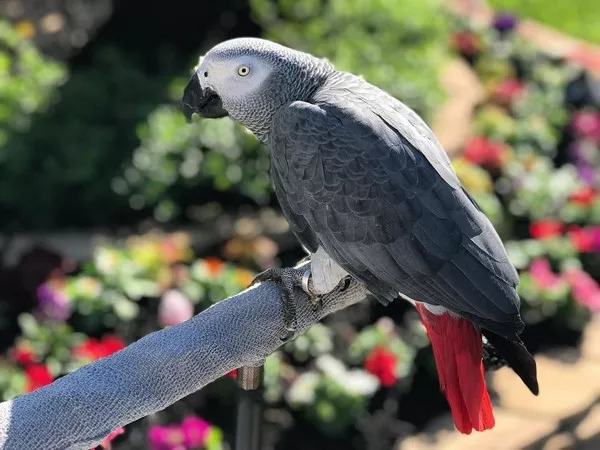Cats come in a wide variety of breeds, each with its unique characteristics and traits. Two such distinctive breeds are the Himalayan and American Curl. While they may share some similarities, they also possess significant differences that set them apart. In this article, we will explore the dissimilarities between these two captivating feline breeds.
1. Origin and History
The Himalayan cat, also known as the “Himmy,” traces its ancestry back to Persia. Bred by crossing Siamese and Persian cats, the Himalayan combines the best features of both breeds. Its luxurious coat, striking blue eyes, and distinctive colorpoint markings are reminiscent of the Siamese, while its body type, gentle personality, and long flowing fur reflect the influence of the Persian breed.
On the other hand, the American Curl originated in California in the early 1980s. This breed stands out due to its uniquely curled ears, resulting from a spontaneous genetic mutation. The American Curl’s initial cat, a stray named Shulamith, had kittens with curled ears, which led to the development of this distinct breed. Since then, the American Curl has gained popularity for its charming appearance and friendly temperament.
2. Physical Characteristics
Himalayan: The Himalayan cat is known for its medium-to-large size and a sturdy build. It has a broad chest and a muscular body, with males typically being larger than females. Himalayans have a flat face with a well-defined nose and round, expressive blue eyes. Their dense, long fur requires regular grooming to prevent matting and tangles. The breed is famous for its colorpoint coat patterns, which display darker points on the ears, face, paws, and tail, contrasting with a lighter body color.
American Curl: The American Curl is a medium-sized breed with a moderately muscled body. One of its most distinguishing features is its uniquely curled ears, which curl backward from the face in a graceful arc. This distinct ear shape remains present throughout the cat’s lifetime and varies from a subtle curl to an impressive curve. The breed has a wedge-shaped head, with large, expressive eyes in various colors. American Curls can have both short and long fur, and their coat comes in a wide array of colors and patterns.
3. Personality and Temperament
Himalayan: The Himalayan cat is renowned for its calm and gentle disposition. These cats are typically relaxed, affectionate, and enjoy the company of their human companions. They are known to be good lap cats and are often described as “purr-therapy” due to their soothing presence. Himalayans appreciate a peaceful environment and may not be as active or playful as some other breeds. They are generally content with a cozy spot to relax and observe their surroundings.
American Curl: American Curls are friendly, sociable cats that enjoy being part of a family. They are known for their curious nature and are often found exploring their surroundings. These cats are interactive and can be quite playful, engaging in activities such as chasing toys or playing interactive games with their owners. While they enjoy human interaction, American Curls are also comfortable spending time alone, making them suitable for individuals who have busy lifestyles.
4. Grooming Requirements
Himalayan: The Himalayan cat has a long, luxurious coat that requires regular grooming to keep it healthy and free from mats. Daily brushing is recommended to prevent tangles and keep the fur free from debris. Special attention should be given to the areas around the face, ears, and tail, as these areas are prone to matting. Additionally, Himalayans may require regular eye cleaning to prevent tear stains, which are common due to their flat facial structure.
American Curl: The grooming needs of the American Curl vary depending on the length of its coat. For the long-haired variety, regular brushing is essential to prevent matting and to keep the coat in good condition. Short-haired American Curls may only require weekly brushing to remove loose hair. Like any other cat breed, regular nail trimming, dental care, and periodic ear cleaning are necessary to ensure overall health and well-being.
5. Health Considerations
Himalayan: As a breed derived from the Persian and Siamese cats, Himalayans can inherit certain health issues associated with these breeds. Some common health concerns in Himalayans include polycystic kidney disease (PKD), respiratory problems, dental issues, and tear duct abnormalities. It is crucial to obtain Himalayan kittens from reputable breeders who prioritize the health and genetic screening of their cats to minimize the risk of inherited diseases.
American Curl: The American Curl is generally a healthy breed with no specific breed-related health problems. However, responsible breeding practices and regular veterinary care are essential to maintain the overall well-being of any cat, regardless of breed.
In conclusion, while both the Himalayan and American Curl are beautiful and captivating cat breeds, they differ significantly in terms of origin, physical characteristics, temperament, grooming needs, and potential health issues. Understanding these distinctions is crucial for potential cat owners to choose the breed that best aligns with their lifestyle and preferences. Whether it’s the Himalayan’s regal charm or the American Curl’s unique curled ears, both breeds offer their own distinct beauty and companionship to cat enthusiasts around the world.
Related Topics:


























